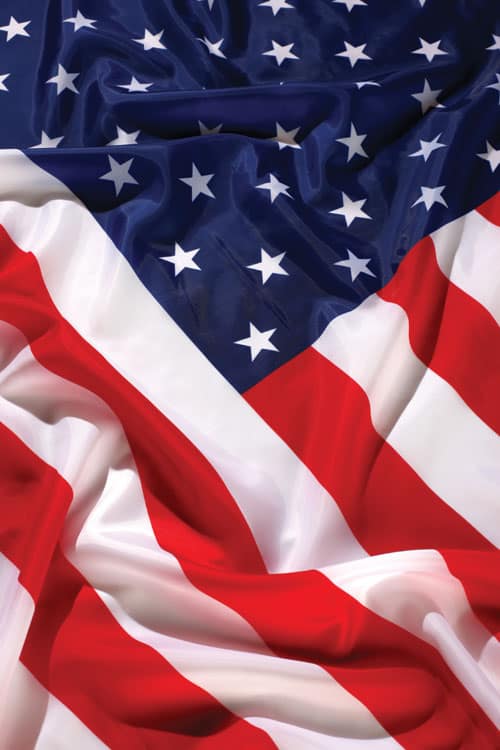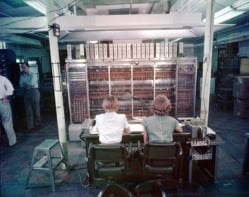A Short History of Physics in the American Century
David C Cassidy
2011 Harvard University Press £22.95/$29.95hb 224pp

“The more important fundamental laws and facts of physical science have all been discovered, and these are now so firmly established that the possibility of their ever being supplanted in consequence of new discoveries is exceedingly remote.” So said Albert Michelson in 1899, before adding, for good measure, that future discoveries “must be looked for in the sixth place of decimals”.
Michelson had been saying this for some time and, in his defence, many others shared this “physics of decimal places” view with the man who would, in 1907, become the US’s first physics Nobel laureate. Yet James Clerk Maxwell, as early as 1871, had warned that such proclamations should not be taken seriously. He pointed out that the real reward for the “labour of careful measurement” was not greater accuracy but the “discovery of new fields of research” and “the development of new scientific ideas”. By the end of the century Maxwell was proved right as the discoveries of X-rays (1895), radioactivity (1896), the electron (1897) and the quantum (1900) transformed physics.
It is perhaps unfair to draw any firm conclusions about the relative state of American and European physics solely from the contrasting attitudes of Michelson and Maxwell, since Michelson himself mistakenly believed he was quoting a leading British physicist, Lord Kelvin. But it is certainly true that while early 20th-century European physicists produced a series of stunning breakthroughs and were busy trying to understand them, their colleagues in the US were still preoccupied with relatively settled topics such as electromagnetism, optics, acoustics and the electrical and thermal properties of materials.
In his slim but richly informative new book, A Short History of Physics in the American Century, the Hofstra University science historian David C Cassidy writes that “the task of history is not to celebrate achievements but to understand them as historical events, to explore and explain what happened, how it happened, and why it happened”. This is exactly what Cassidy does with some style as he traces the trajectory of US physics from its humble beginnings in 1900 to its pre-eminence by the 1950s – and, perhaps controversially, at least in his own country – “by the end of the century to a more modest place as an internationalized discipline within a global community of competitors”.
It comes as something of surprise to learn that in 1900 the US had more physicists than Germany. The trouble was that only three of them were theorists, compared with 16 at German institutions. American physicists did score some notable successes: during the first decade of the 20th century, physicists at US institutions were responsible for the first observations of the radiation pressure of light, the magnetic rotation of sodium vapour and measurements of the heat developed in a material caused by radioactivity. But the purely practical focus of their work also had a debilitating effect on the community, and the first to express concerns about it was Henry Rowland of Johns Hopkins University in Baltimore. After experiencing how physics was being done in Germany, Rowland championed a reorientation from applied to pure physics. In an 1883 address to the American Association for the Advancement of Science, the man who would go on to become the first president of the American Physical Society argued that “the proper course of one in my position is to consider what must be done to create a science of physics in this country, rather than to call tele-graphs, electric lights and such conveniences by the name of science”.
Rowland could not possibly have dreamed how dominant American physics (by which Cassidy means both the profession and the science) would become in the decades that followed. But change was coming: as the astronomer George Hale recognized, the First World War offered “the greatest chance we ever had to advance research in America”. By its end, scientific research in the US had been integrated into the nation’s economic and cultural affairs, although it remained second-rate throughout the 1920s, especially when compared with German contributions. Yet that too would soon change. Following the Nazi rise to power in January 1933, the next two years saw 278 physicists and 162 mathematicians fired from their posts for being Jewish or otherwise falling afoul of the Nazis. Hans Bethe, Albert Einstein and Eugene Wigner were just three of the 192 exiles who had found their way to the US by 1939. These emigrÄ scientists, many of whom were theorists, helped push the frontiers of American physics.
As victory in the Second World War approached, US President Franklin Roosevelt asked his director of the Office of Scientific Research and Development, Vannevar Bush (no relation to the later presidents Bush), to map the contours of the postwar relationship between science and the federal government. In 1945 Bush handed his report Science, the Endless Frontier to Roosevelt’s successor, Harry Truman. In it, Bush made the argument for permanent government funding of research to be undertaken “without thought of practical ends”.
The implementation of Bush’s recommendations ensured that by the 1950s and 1960s, aided by federal sponsorship and military funding, American physics led the world. Yet it was not to last. In the 1970s, with the US economy struggling under mounting debt, inflation and the impact of the Vietnam War, federal funding for research and development was drastically cut. As memories of the Cold War-era space race began to fade, so did the US commitment to scientific leadership, and the nation found itself struggling to maintain a competitive edge.
To some extent, corporations stepped in to fill the gap. Cassidy notes that from the early 1980s corporate sponsorship of research began to surpass state support, and by 2000 some 70% of all industrial R&D in the US was corporate-funded. Yet support for product-oriented development is not the same as support for the kind of “blue sky” research that would translate into commensurate breakthroughs in fundamental physics. Pure research was no longer insulated from the political, economic and social needs of society, and in retrospect, Congress’s decision to kill off the $11bn Superconducting Super Collider in 1993 in an attempt to reduce the budget deficit was only the most obvious sign of the decline.
For an account of the US academic physics community’s development from the late 19th century through the first two-thirds of the 20th, Daniel Kevles’ 1971 book The Physicists remains the standard against which other volumes are judged, and Cassidy is quick to admit this. However, he does a fine job of bringing the story of America’s physicists up to the threshold of the 21st century, and he also makes an interesting prediction about physics as a whole. To Cassidy, it seems unlikely that one nation will ever again dominate the field as the US once did, since the community of physicists is now truly international. Because of this, he writes, “it is doubtful that, a century from now, a similar history focused on physics in a single nation will be possible”.
At the moment, it appears that China is the nation most likely to prove Cassidy wrong. In the first decade of the 21st century, China more than doubled its research output, and its share of published physics papers rose from 8.2% in 2001 to 18.6% in 2010. Over the same period, America’s share fell by 3%. So will our descendants be reading A Short History of Physics in the Chinese Century? Perhaps. But as Michelson’s example shows, we should be wary about predicting future directions in physics research.



